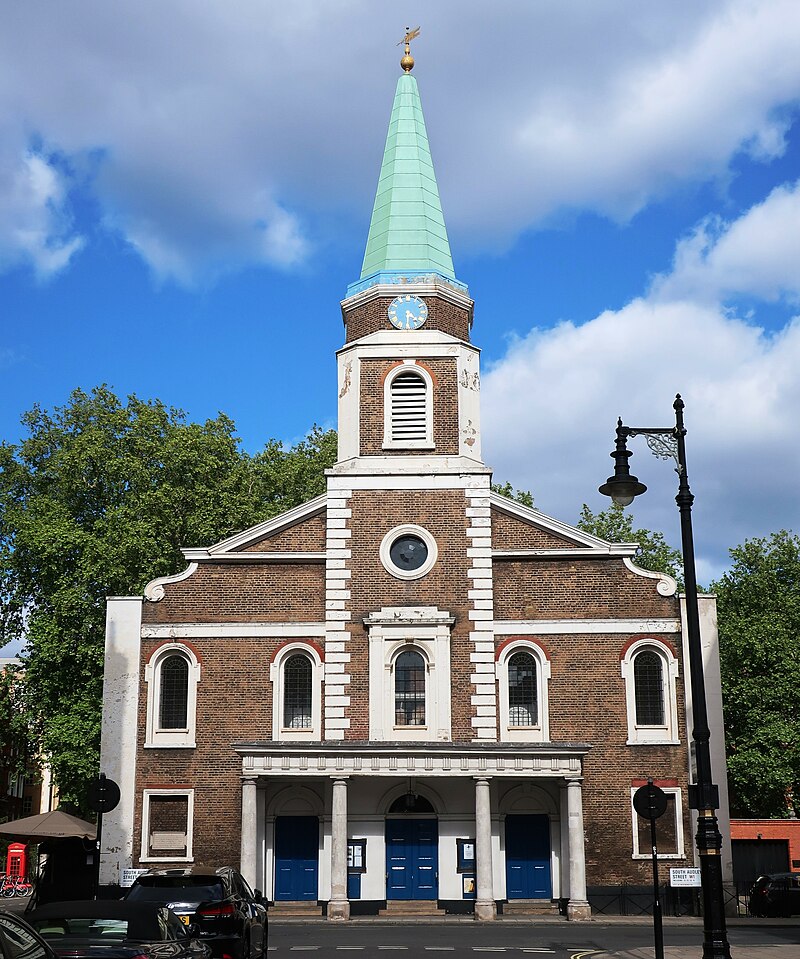© Unofficial Royalty 2024

Queen Elizabeth II of the United Kingdom; Credit – The Royal Family Facebook page
September 8, 1157 – Birth of King Richard I of England at Beaumont Palace in Oxford, England
Richard succeeded his father King Henry II in 1189. He spent very little time in England, perhaps as little as six months, during his ten-year reign. Rather than regarding the Kingdom of England as a responsibility requiring his presence as the king, Richard saw England as a source of revenue to support his armies. Most of his reign was spent on Crusade, in captivity, or actively defending his lands in France.
Unofficial Royalty: King Richard I of England
September 8, 1397 – Death (murder?) of Thomas of Woodstock, Duke of Gloucester, son of King Edward III of England, at the Prince’s Inn in the Pale of Calais, now in France; buried at the Collegiate Church of the Holy Trinity in Pleshy, England, later reburied at Westminster Abbey in London, England
Thomas’ nephew King Richard II was having issues with the authority of the nobility. Thomas and other nobles wanted to depose Richard, but he was betrayed, arrested for treason, and imprisoned. He was probably murdered by a group of men led by Thomas de Mowbray, 1st Duke of Norfolk, and Sir Nicholas Colfox, presumably on the orders of King Richard II. After Thomas’ death, his confession was read to Parliament and he was declared guilty of treason. He was attainted as a traitor and his title Duke of Gloucester, goods, and estates were forfeited to the crown. Thomas’ probable murder caused an outcry among the English nobility and added to Richard II’s unpopularity. In 1399, Richard’s first cousin Henry of Bolingbroke, the eldest son of John of Gaunt, deposed Richard and succeeded to the throne as King Henry IV, the first King of the House of Lancaster.
Unofficial Royalty: Thomas of Woodstock, Duke of Gloucester
September 8, 1650 – Death of Elizabeth Stuart, Princess of England, daughter of King Charles I of England, at Carisbrooke Castle on the Isle of Wight, England; buried in a small crypt under the altar at Saints Thomas Church in Newport, on the Isle of Wight, England
After the arrest of their father King Charles I of England, Elizabeth and her brother Prince Henry of England, Duke of Gloucester were unable to flee with their mother Henrietta Maria of France because they were not with her at that time. They remained in England and were placed under the care of the Parliamentarians. Elizabeth and Henry were moved from one residence to another due to the plague. After their father’s beheading, Parliament decided that they needed to be in a more secure place, far away from London. Elizabeth and Henry were moved to Carisbrooke Castle on the Isle of Wight, England. On August 23, 1650, less than a week after arriving at Carisbrooke Castle, Elizabeth began to feel ill. On September 1, she went to bed and then could no longer get up. She died on September 8, 1650, aged fourteen, probably from pneumonia.
Unofficial Royalty: Elizabeth Stuart, Princess of England
September 8, 1675 – Death of Amalia of Solms-Braunfels, Princess of Orange, wife of Frederik Hendrik, Prince of Orange, in The Hague, the Netherlands; buried at the Nieuwe Kerk in Delft, the Netherlands
Frederik Hendrik, Prince of Orange and Amalia were the parents of Willem II, Prince of Orange who married Mary, Princess Royal, eldest daughter of King Charles I of England. They had one son Willem III, Prince of Orange, later King William III of England. Amalia had influence in politics, initially as Frederik Hendrik’s adviser, and then, after 1640, when her husband became ill, she became openly involved in political life and received foreign diplomats and envoys.
Unofficial Royalty: Amalia of Solms-Braunfels, Princess of Orange
September 8, 1749 – Birth of Marie Thérèse Louise of Savoy, Princesse de Lamballe, favorite of Marie Antoinette, Queen of France, born Maria Teresa Luisa of Savoy-Carignano at the Palazzo Carignano in Turin, Duchy of Savoy, now in Italy
Marie Thérèse was presented to the new Dauphine, the future Queen Marie Antoinette, upon her arrival in France in 1770. Marie Antoinette was charmed by the Princess of Lamballe, and soon the two became very close. Over the next few years, Marie Thérèse was rarely separated from Marie Antoinette and became one of her closest friends and confidantes. In 1792, during the French Revolution, Marie Thérèse went before a tribunal that insisted she swear “hatred to the King and the Queen and to the monarchy”. Refusing to do so, she was released to the streets where an angry mob quickly killed her.
Unofficial Royalty: Marie Thérèse Louise of Savoy, Princesse de Lamballe, favorite of Marie Antoinette, Queen of France
September 8, 1749 – Birth of Gabrielle de Polastron, Duchesse de Polignac, favorite of Marie Antoinette, Queen of France, born Yolande Martine Gabrielle de Polastron in Paris, France
In 1775, Gabrielle and her husband were invited to visit Versailles by her sister-in-law, Diane de Polignac, who was a lady-in-waiting to Princess Elizabeth of France, the younger sister of King Louis XVI. Gabrielle was formally presented to Queen Marie Antoinette who instantly took a liking to her, and soon asked her to move permanently to Versailles. Heavily in debt, this was not a move that Gabrielle and her husband could afford. Despite their aristocratic background, there was little money for extravagance. They lived on Jules’s military salary of just 4,000 livres and were heavily in debt. Becoming aware of this, Marie Antoinette quickly arranged to settle their debts and find a better position for Jules within the royal household. In 1782, Gabrielle was appointed Governess to the children of France. Following the storming of the Bastille in July 1789, Gabrielle and her family fled France, traveling throughout Europe before eventually settling in Vienna, Austria. During this time, she remained in close contact with Marie Antoinette for the next several years.
Unofficial Royalty: Gabrielle de Polastron, Duchesse de Polignac, favorite of Marie Antoinette, Queen of France
September 8, 1800 – Death of Ernst Friedrich, Duke of Saxe-Coburg-Saalfeld, in Coburg, Duchy of Saxe-Coburg-Saalfeld, now in Bavaria, Germany; buried in the ducal crypt at Stadtkirche St. Moriz in Coburg, Duchy of Saxe-Coburg-Saalfeld, now in Bavaria, Germany
Ernst Friedrich was the great-grandfather of Queen Victoria and her husband Prince Albert. In 1764, Ernst Friedrich succeeded his father as Duke of Saxe-Coburg-Saalfeld and transferred the official residence of the duchy from Saalfeld to Coburg. Because the Duchy of Saxe-Coburg-Saalfeld was heavily in debt, Holy Roman Emperor Joseph II appointed a debit commission headed by Prince Joseph of Saxe-Hildburghausen and then Ernst II, Duke of Saxe-Gotha-Altenburg, to prevent the bankruptcy of the duchy. The work of the debt commission lasted over thirty years and during that time period, Ernst Friedrich was given a strict annual allowance.
Unofficial Royalty: Ernst Friedrich, Duke of Saxe-Coburg-Saalfeld
September 8, 1814 – Death of Maria Carolina of Austria, Queen of Naples and Sicily, wife of Ferdinando I, King of the Two Sicilies, at Hetzendorf Palace in Vienna, Austria; buried at the Imperial Crypt in the Capuchin Church in Vienna, Austria
Maria Carolina was the first wife of King Ferdinando IV of Naples and III Sicily, after her death, Ferdinando I, King of the Two Sicilies. She was the daughter of the powerful Empress Maria Theresa, who was in her own right Archduchess of Austria, Queen of Hungary, Queen of Croatia, and Queen of Bohemia. Maria Carolina had been well educated and carefully prepared for her role as a future queen but her husband Ferdinando had never received a comprehensive education and spent his time hunting, playing pranks, and eating excessively. In 1775, after her first son was born, Maria Carolina took her place on the council of state. From then on, Maria Carolina was the de facto ruler of the Kingdoms of Naples and Sicily. Maria Carolina, aged 62, died from a stroke without seeing the final defeat of Napoleon and the Congress of Vienna’s restoration of her husband’s rights to the thrones of Naples and Sicily.
Unofficial Royalty: Maria Carolina of Austria, Queen of Naples and Sicily
September 8, 2022 – Death of Queen Elizabeth II of the United Kingdom, at Balmoral Castle in Aberdeenshire, Scotland; interred in the crypt of the King George VI Memorial Chapel in St. George’s Chapel at Windsor Castle. At the same time, the coffin of her husband Prince Philip, Duke of Edinburgh, who died in 2021, was moved from its temporary place in the Royal Vault beneath St. George’s Chapel and interred in the crypt of the King George VI Memorial Chapel.
Queen Elizabeth II of the United Kingdom died at the age of 96, at Balmoral Castle, her home in Balmoral, Scotland, on September 8, 2022, at 3:10 PM, more than three hours before the public was informed. The death certificate, released by the National Records of Scotland cites that she died of “old age”. Queen Elizabeth II is the longest-reigning British monarch having surpassed her great-great-grandmother Queen Victoria on September 9, 2015. In May 2022, Queen Elizabeth II surpassed Prince Johann II of Liechtenstein (reigned from November 12, 1858 to February 11, 1929, for 25,658 days or 70 years, 91 days), and then in June 2022, she surpassed King Bhumibol Adulyadej of Thailand (reigned June 9, 1946 to October 13, 2016, for 25,694 days or 70 years, 126 days) to become the second longest-reigning monarch. Only King Louis XIV of France, (reigned May 14, 1643 to September 1, 1715, for 26,407 days or 72 years, 110 days) has reigned longer. (Note: Lengths of reign are from a list of monarchs of states that were internationally sovereign for most or all of their reigns and have verifiable reigns by an exact date.)
Unofficial Royalty: Queen Elizabeth II of the United Kingdom
Unofficial Royalty: The Death and Funeral of Queen Elizabeth II of the United Kingdom
Unofficial Royalty: The Funeral of Queen Elizabeth II of the United Kingdom
This article is the intellectual property of Unofficial Royalty and is NOT TO BE COPIED, EDITED, OR POSTED IN ANY FORM ON ANOTHER WEBSITE under any circumstances. It is permissible to use a link that directs to Unofficial Royalty.
















